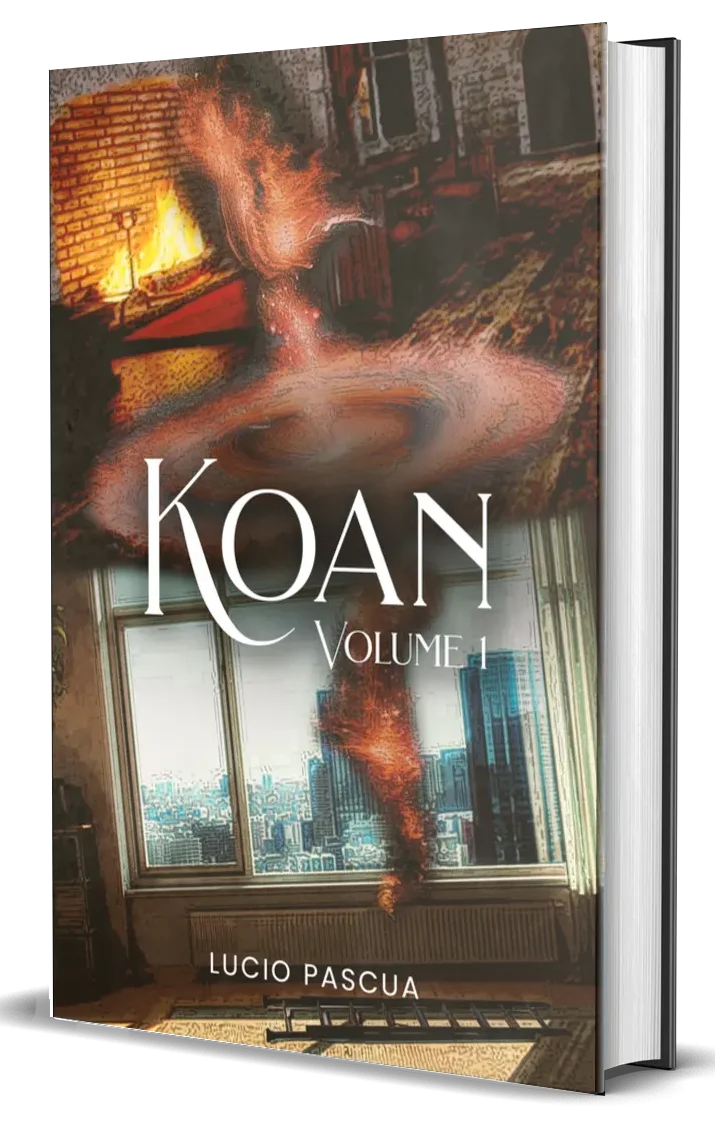Every story needs tension to thrive, but in Lucio Pascua’s KOAN, tension isn’t just about conflict between characters. It’s about the very structure of the universe itself. From the first page to the last, the novel meditates on the pull between two great forces: chaos and order. This duality is not simply a backdrop for the plot; it is the thread that weaves together myth, philosophy, and human experience. And it’s this balance, delicate, fragile, and endlessly shifting, that makes KOAN such a compelling reflection of our own world.

In KOAN, the Guardians embody this tension. The Northern Tortoise, with its enduring patience and wisdom, represents stability, continuity, and tradition. Its presence anchors the narrative, reminding readers that survival often depends on endurance and foresight. The Eastern Dragon, on the other hand, symbolises adaptability, movement, and change. Where the Tortoise grounds, the Dragon lifts. Together, they show that no universe can thrive with only one side of the spectrum. Order without change leads to stagnation; chaos without structure leads to destruction.
Characters like El-Javaz bring this balance into the human realm. His radical philosophy of peace is not a denial of conflict but a deliberate choice to transform chaos into harmony. His rule isn’t about eliminating disorder but about redirecting it, proving that even the most disruptive forces can serve a higher vision. On the other end of the spectrum lies Hel, a villain forged by generations of cruelty and rage. He embodies the destructive side of chaos, showing us what happens when disorder is inherited without wisdom. Through these contrasting figures, KOAN invites readers to consider how balance, or the lack of it, shapes our destinies.
What makes this theme resonate so powerfully is that it mirrors the tensions of our own lives. We all navigate the pull between stability and change, security and risk, tradition and innovation. KOAN reminds us that both are necessary, and that wisdom lies in knowing when to lean into one force and when to yield to the other. In this sense, the novel is more than fantasy. It is a meditation on balance as a practical, everyday philosophy.
The dual forces also give the book its allegorical depth. Chaos is not simply “bad,” and order is not always “good.” Instead, Pascua shows us that each carries potential and danger in equal measure. It echoes the themes of films like The Green Knight or Cloud Atlas, where characters must learn that growth requires navigating contradictions. By exploring these forces without simplifying them into black-and-white morality, KOAN offers readers a nuanced lens for understanding both the universe of the novel and the complexities of their own lives.
Ultimately, the recurring theme of balance in KOAN matters because it refuses to let us rest in easy answers. In a time when our world feels increasingly polarized, Pascua’s narrative suggests that neither extreme can sustain us. The guardians, the leaders, and even the villains show that harmony emerges only when we accept the necessity of both forces and learn how to hold them together without losing ourselves in either.
KOAN doesn’t just tell a story about cosmic duality; it gives us a mirror for our own struggles. It challenges us to ask: Where in our lives are we clinging too tightly to order? Where are we allowing chaos to consume us unchecked? And most importantly, how can we find the balance that allows both to exist in harmony?
In the end, the universe of KOAN is shaped by the same truth that shapes ours: we are always walking a line between chaos and order. And it’s on that line, not on one side or the other, that we discover what it really means to live.
Read KOAN byLucio Pascua, available on Amazon: https://www.amazon.com/dp/B0FHDQN2C1.